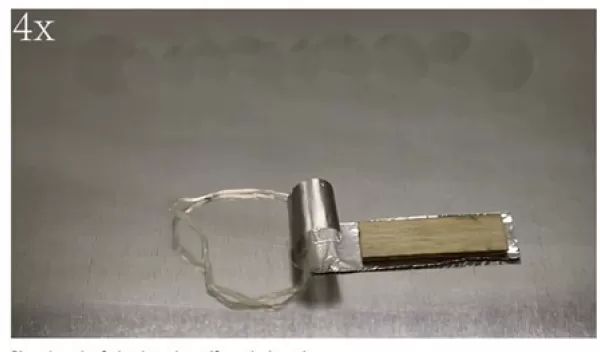
Autonomous crawling soft 'ringbots' can navigate narrow gaps
Researchers at North Carolina State University have created a ring-shaped soft robot capable of crawling across surfaces when exposed to elevated temperatures or infrared light. The researchers have demonstrated that the "ringbots" are capable of pulling a small payload across a surface in ambient air or under water and can pass through a gap narrower than their ring size.
The paper is published in the journal Advanced Materials. The research was supported by two grants from the U.S. National Science Foundation.
When a ringbot was placed on a surface at 55 degrees Celsius (131 degrees Fahrenheit) or higher, the portion of the ribbon touching the surface contracted, while the portion of the ribbon exposed to the air did not. The rolling motion in the ribbon can be seen in this video.
A rolling motion in the ribbon also occurred when researchers shone infrared light on the ringbot; the portion of the ribbon exposed to the light contracted, while the portion shielded from the light did not.
In practical terms, this means that the crawling ringbot moves from the bottom up when placed on a hot surface. But when exposed to infrared light, the movement begins from the top down.
When placed on a hot surface, the crawling ringbot pulls itself forward. But when exposed to infrared light, it pushes itself forward. Think of it as front-wheel drive versus rear-wheel drive.
"This is a fundamental advance, not something designed with a specific application in mind," says Yao Zhao, first author of the paper. "We are demonstrating what can be accomplished when 'physical intelligence' is engineered into the material and the design of the structure itself, allowing it to move and navigate space without computational input."
Commenting on the research, NSF program director Siddiq Qidwai said, "The concept of intelligence embedded in the body in contrast to computational intelligence enabled by a central processing unit is emerging as the next frontier in the field of human-made autonomous systems. This work uses the convergence of mechanics, materials science and robotics to fundamentally push research in this area."
